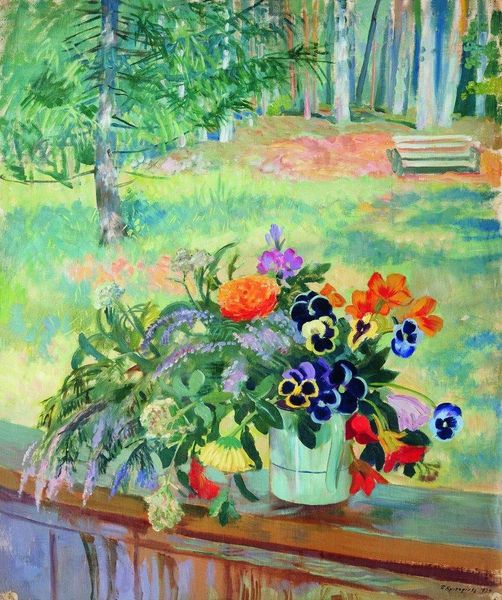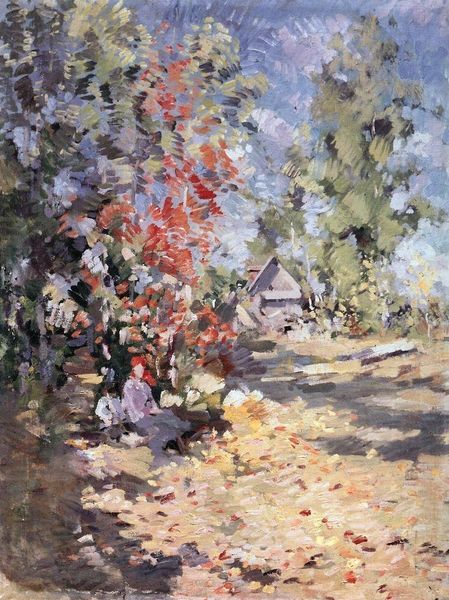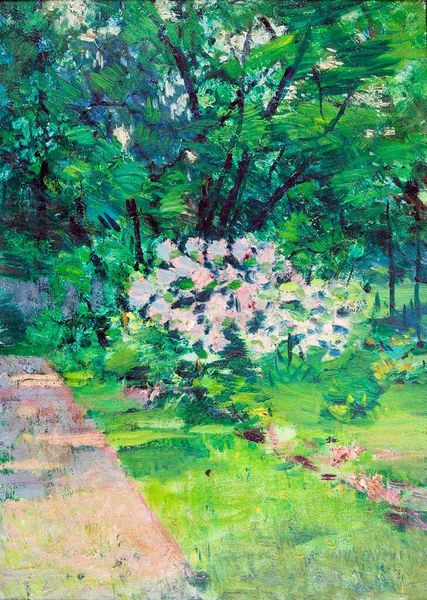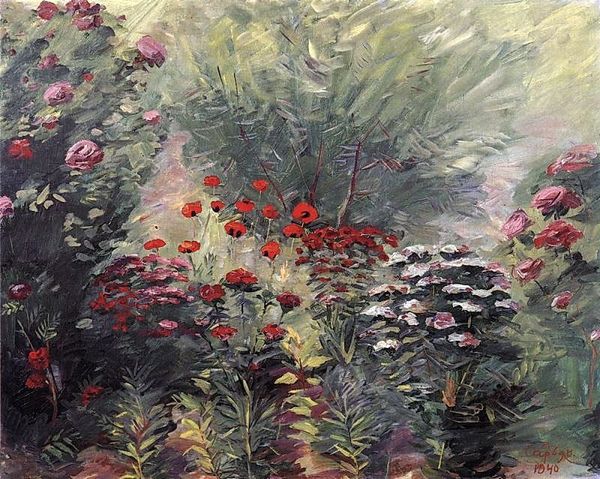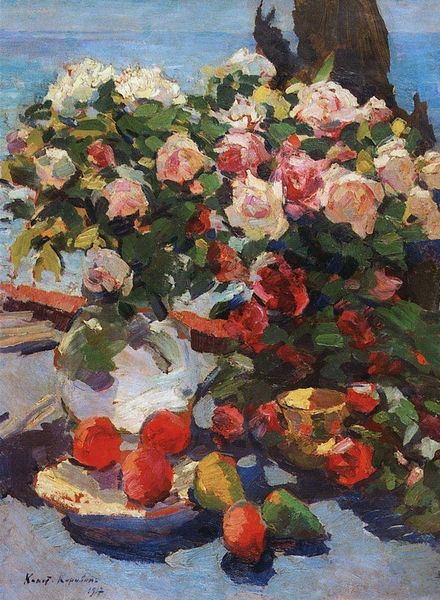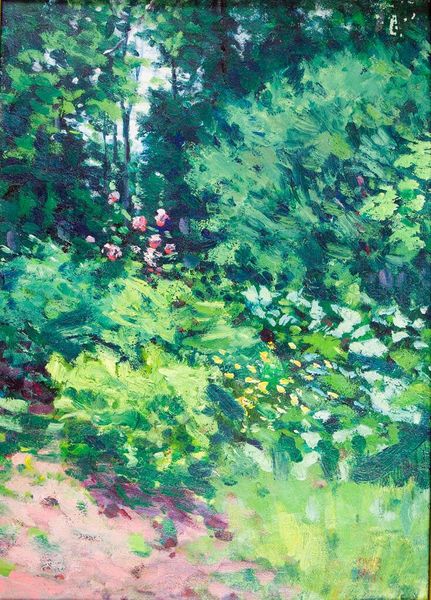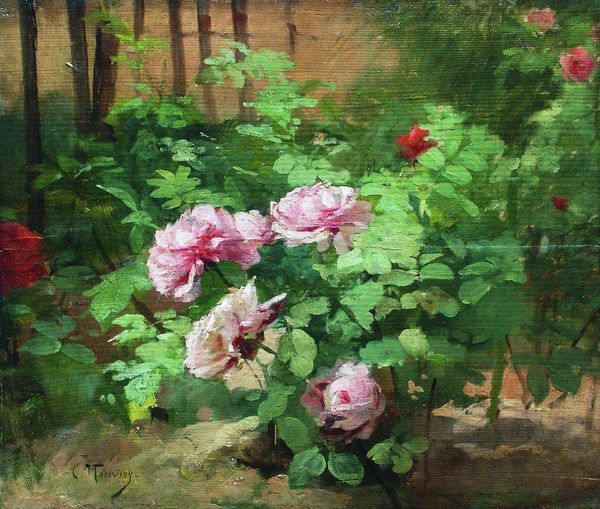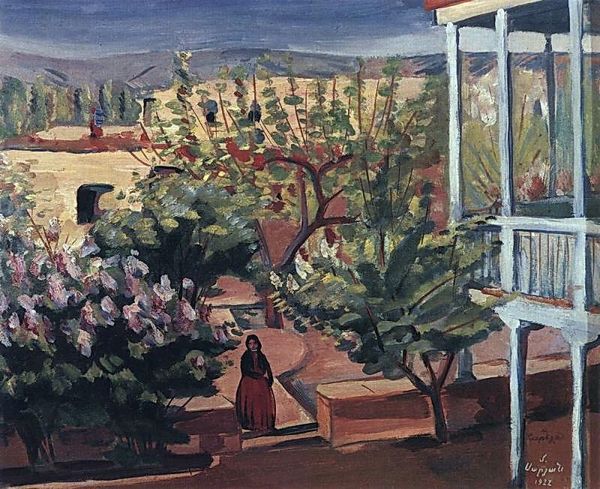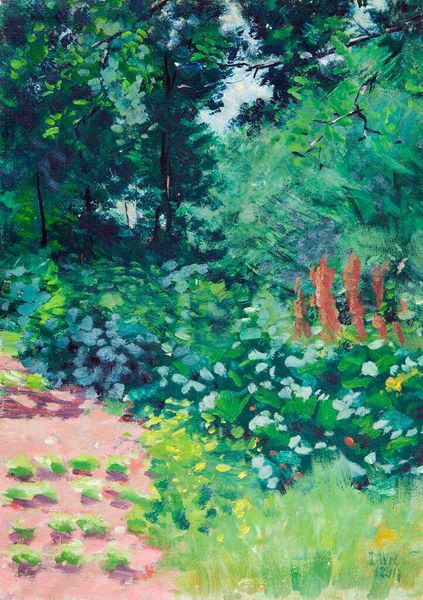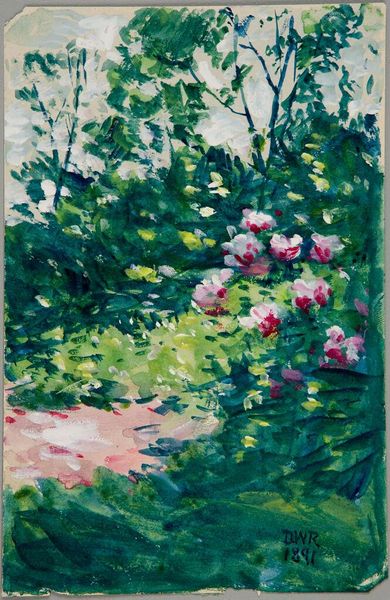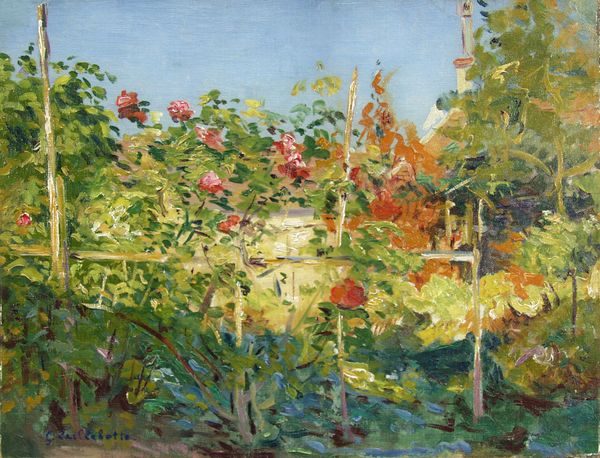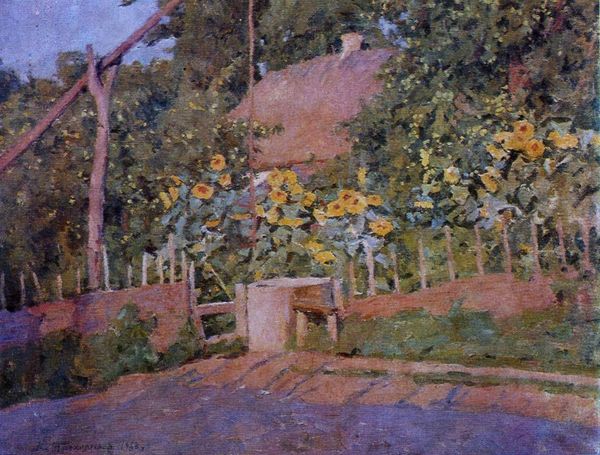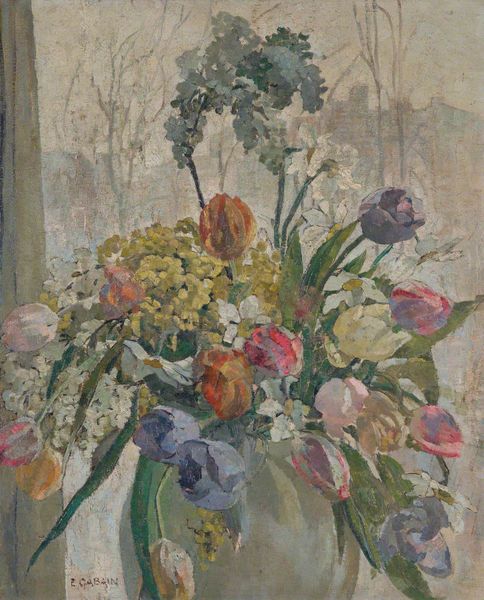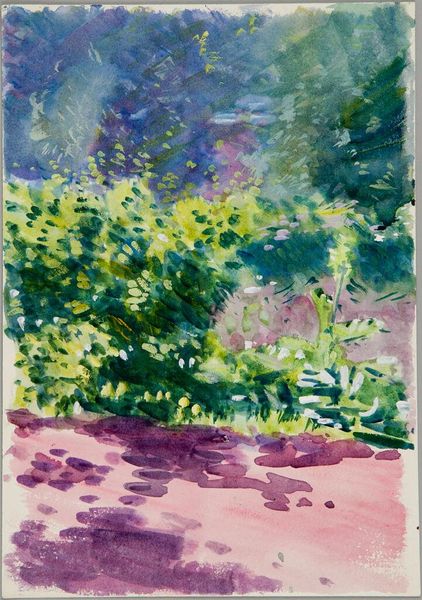
Copyright: Public domain US
Curator: Let’s consider Martiros Sarian's "Lilac" from 1922, executed in oil paint. What are your initial thoughts? Editor: There's a dreamy, almost tactile quality to it. I’m drawn to how Sarian captured the ephemeral beauty using what appear to be thick layers of paint. It's more about conveying the idea of lilac than precise botanical representation. Curator: Precisely. Note how Sarian abandons academic realism in favor of bold, almost Fauvist color. The structure relies on juxtaposing planes of color rather than traditional perspective, forcing our eye to engage in active interpretation. Editor: I find myself thinking about the physical process. The brushstrokes suggest an urgency, a need to capture the subject before it fades. How would you describe the implications of painting 'en plein air', where Sarian engages the raw materials available to him within nature? Curator: Interesting point. The materiality serves the composition: his simplification and abstraction of form allow for greater emotional resonance. Editor: I wonder, given the political upheavals of the period, how did the physical labor, and the acquisition of materials play into the themes present in this landscape painting. Curator: One could see this as an escape from, or even a commentary on, the turmoil. Consider the intense focus on natural beauty amidst societal change; we can also regard the material reality of procuring paint as an exercise of freedom. Editor: Yes, his manipulation of the material world as a quiet but profound act. Looking closely at how he has constructed it, I’m also reminded that this lilas is a painting first, before it is a representation of natural elements. The material comes first. Curator: Ultimately, Sarian offers a vision of serene beauty divorced from direct narrative. The artwork is not literal—the artist asks for our engagement as collaborators. Editor: It is this engagement with materials and their manipulation which really moves the artwork to another dimension. Curator: Precisely. Thank you for highlighting such points that add another layer to our experience of “Lilas.”
Comments
No comments
Be the first to comment and join the conversation on the ultimate creative platform.
